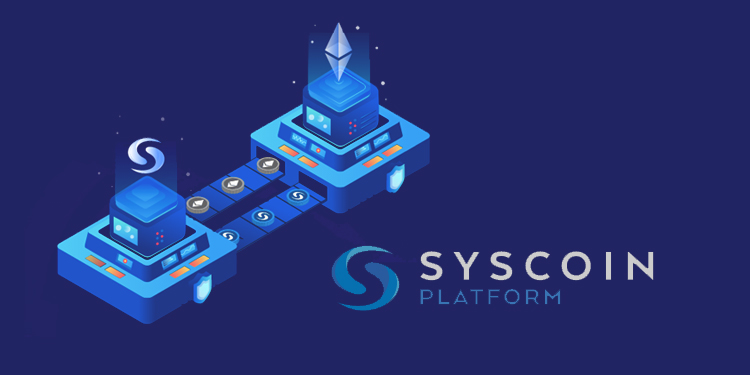Syscoin, one of the earliest crowdfunded blockchain projects, has announced the successful mainnet launch of the Syscoin Bridge protocol. For Syscoin, this represents a significant technological milestone in blockchain interoperability. The Syscoin Bridge is a zero counterparty bridge for moving tokens back and forth between the Syscoin and Ethereum blockchains.
“In the past, many interoperability efforts introduced challenges such as centralization, custodianship, mutating coin supply, the need for market liquidity providers, and involvement of a third token or chain as an intermediary. Syscoin Bridge, with its elegant design, is the answer to these challenges. We have also introduced and implemented an all-new concept, cross-chain fractional supply, which retains tokens’ designed supply characteristics across multiple chains – a product of the underlying burn/mint mechanism utilizing SPV Proofs.”
– The Syscoin Team
Syscoin Ethereum Bridge
Currently, ERC-20 tokens can utilize the Syscoin Bridge and receive various benefits and capabilities from Syscoin Platform’s ecosystem including:
- Ideal store of value through Bitcoin merge mined Proof of Work and a Bitcoin-compliant core
- Decentralization for Ethereum DeFi platform users
- Cross-chain fractional supply and fungibility
- Token supply integrity is maintained across multiple chains via burn/mint using SPV proofs. Operate across chains without locking coins, or otherwise skewing real supply
- Maintain sovereign ownership and control of your tokens throughout interoperations
- Token fungibility emerges from the use of zero-knowledge proofs. Transaction trackers now must evolve to remain relevant in the interoperability landscape.
- Syscoin Token Platform with Z-DAG Protocol
- Decentralized token payment layer useful for point-of-sale, providing near-instant transactions at greatly diminished fees.
- A throughput that exceeds credit card networks, proven by Whiteblock
- Case-by-case determination of ideal speed/security trade-off through the use of an interactive protocol with probabilistic security catching up to 99.9999% of double-spend events in ten seconds or less
- Onchain settlement of all near-instant payments
- Alleviate Scaling Pressure
- Free resources on traffic-laden networks by off-loading to Syscoin Platform, an ideal network for simple value transfers, which often represent the majority of traffic.
- Improve network performance for flagship services such as turing complete smart contracts.
In turn, Syscoin Platform tokens gain the utility of Ethereum, such as turing complete smart contracts, and its wide array of tools such as MetaMask, hardware wallets, DEX and DeFi platforms.
The SYSX ERC-20 is an active, working instance of a Syscoin Bridge integration. It can serve as a reference implementation for developers. Check out the Ethereum smart contract on GitHub.
Potential Use Cases
The uses made possible by the Syscoin Bridge protocol are vast. The technology opens a world of options and viability to tokens, apps, and others. Some examples are listed below:
- Tokens at Point-of-sale – Using the Syscoin Bridge, merchants and token users can benefit from near-instant transaction confirmation; miniature transaction fees; case by case determination of speed/security trade-off; and protect themselves against the risk of double-spends. Utilizing stablecoins such as Tether’s Ethereum-based assets via the Syscoin Bridge could open up new paths of payment for merchants and users alike.
- Decentralization by Choice – Users of platforms with less-proven consensus mechanisms, such as Proof of Stake or its variants, or otherwise facing potential centralization issues, now have the option of utilizing the Bitcoin-compliant merge mined PoW available to them via this bridging technology.
- Exchanges (including DEX) – Syscoin Bridge combined with the speed and high-throughput fulfillment provided by the Syscoin Token Platform can enable performant exchanges.
Interchain integration through Syscoin Bridge is not limited to Ethereum alone. The Syscoin team said ecosystem participants will continue to weigh the benefits of potential future integrations.
